Black Stripe Speaker Wire: Positive or Negative?
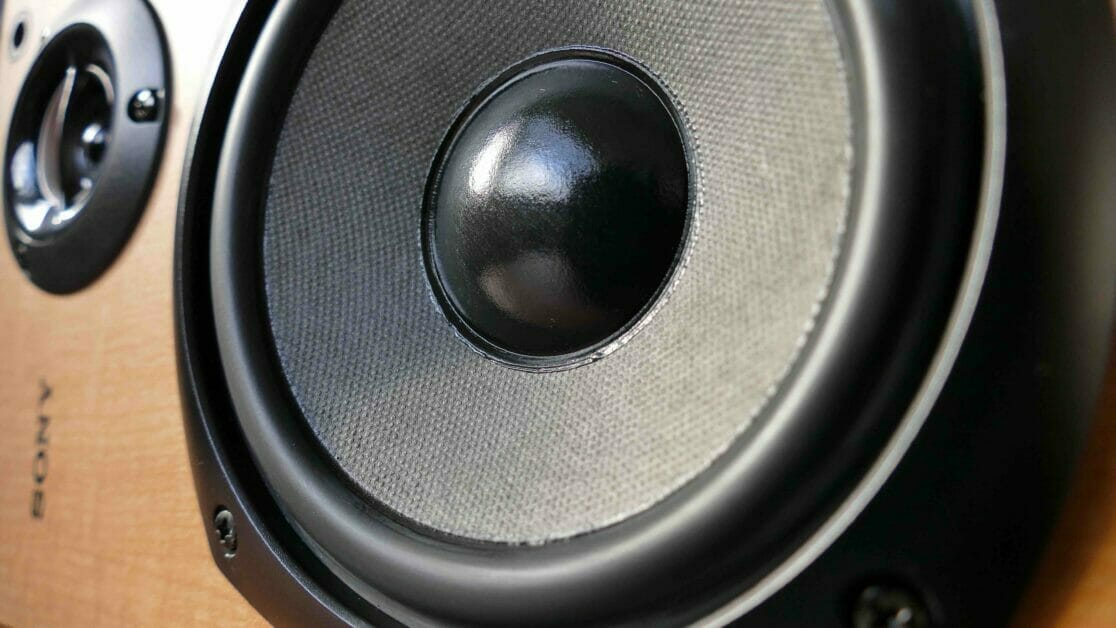
If you’ve looked closely at your speaker wires, you may have noticed that one side has a black stripe. The wire with the black stripe is usually considered the negative wire.
Hang around, folks! This article will explain why this is the case, what happens if you mix them up, and how to avoid wiring mishaps.
Understanding Speaker Wires and Their Colors
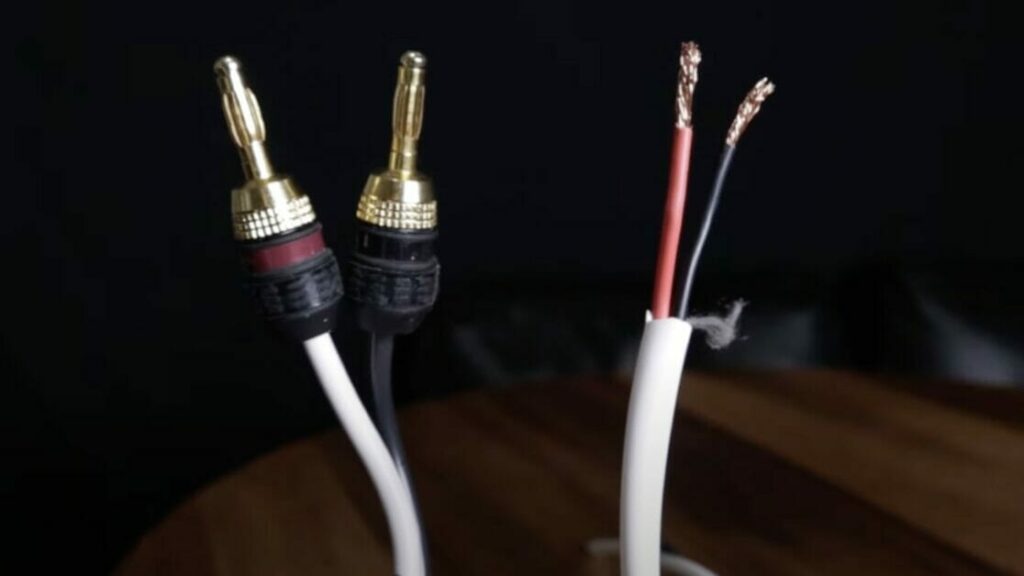
If you’ve ever looked at a length of speaker wire, you’ve probably noticed that it has two distinct colors. One side is typically marked with a black stripe or entirely black. But have you ever stopped to wonder what these different colors mean?
They’re not just for decoration – those colors are important when hooking up your speakers properly. Speaker wires carry an electrical current that makes your speakers produce sound. And, like any electrical system, there’s a positive and negative flow.
Now, here’s where the color coding comes into play! Typically, the wire with the black stripe or entirely black color is considered negative, while the other unmarked or differently colored wire is regarded as positive.
But hold on! Not all speaker wires follow this exact color scheme. Sometimes, manufacturers switch things up. For instance, some use clear insulation with one copper and one silver conductor to identify positive and negative terminals.
Here’s a quick breakdown:
| Color | Charge |
|---|---|
| Black Stripe/Entirely Black | Negative |
| Unmarked/Different Colors | Positive |
So next time you set up your home audio system, don’t forget which wire goes where. Just remember our little rhyme – ‘black for back’ – and you’ll be good to go!
Importance of Correctly Connecting Positive and Negative Wires
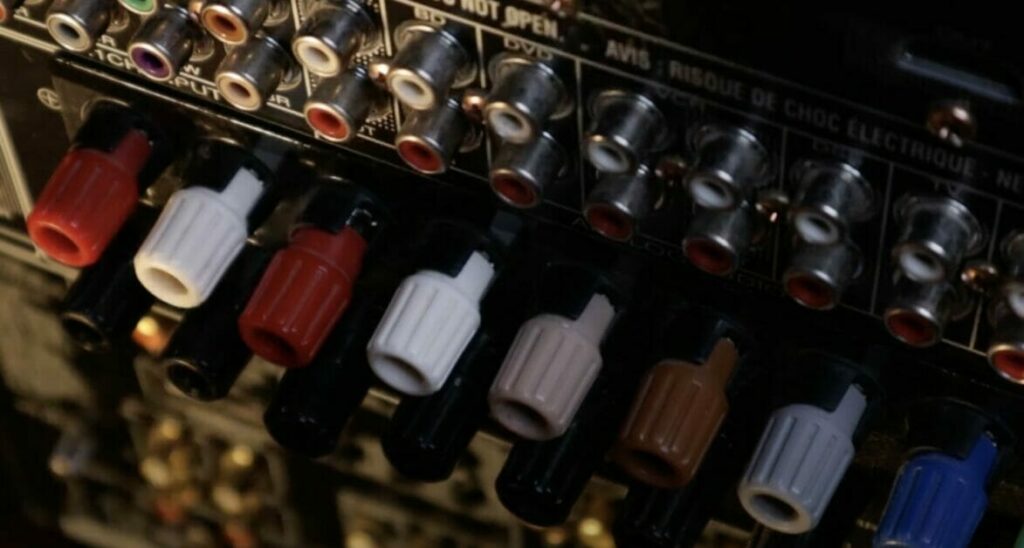
You might be asking yourself why connecting the positive and negative wires is important when dealing with speaker wires, right? The answer is all about sound quality and safety.
Sound Quality
First up on our list is sound quality. When you wire your speakers incorrectly – like swapping the positive for the negative – you’ll likely notice a significant drop in audio quality. This phenomenon is known as phase cancellation. It occurs when two sound waves are out of phase, causing them to cancel. So, instead of jamming to your favorite tunes in high definition, you’re left with a dull and lifeless beat.
Safety
Now, let’s talk safety. Incorrect wiring can lead to short circuits – yikes! These aren’t just dangerous; they can also damage your equipment over time or immediately if you’re unlucky.
Here’s something interesting: Did you know that most modern amplifiers have built-in protection against short circuits? But don’t let this fool you into thinking incorrect wiring isn’t a big deal—it is!
- Short circuits can cause damage.
- Possible fire hazard.
- Expensive repairs or replacements.
If I’ve piqued your interest in the technicalities behind these problems, here’s a quick rundown:
| Problem | Cause | Consequence |
|---|---|---|
| Phase Cancellation | Incorrect wiring (swapping positive for negative) | Reduction in audio quality |
| Short Circuits | Same polarity connection (Positive to Positive/Negative to Negative) | Equipment damage/Possible fire hazard |
Getting those wires right isn’t just some tech jargon—it’s about keeping your gear safe while ensuring the best possible sound experience. Trust me; your ears will thank you for it! So remember: the black stripe on the speaker wire is usually negative, but double-check before making any connections.
Common Mistakes Made When Wiring Speakers
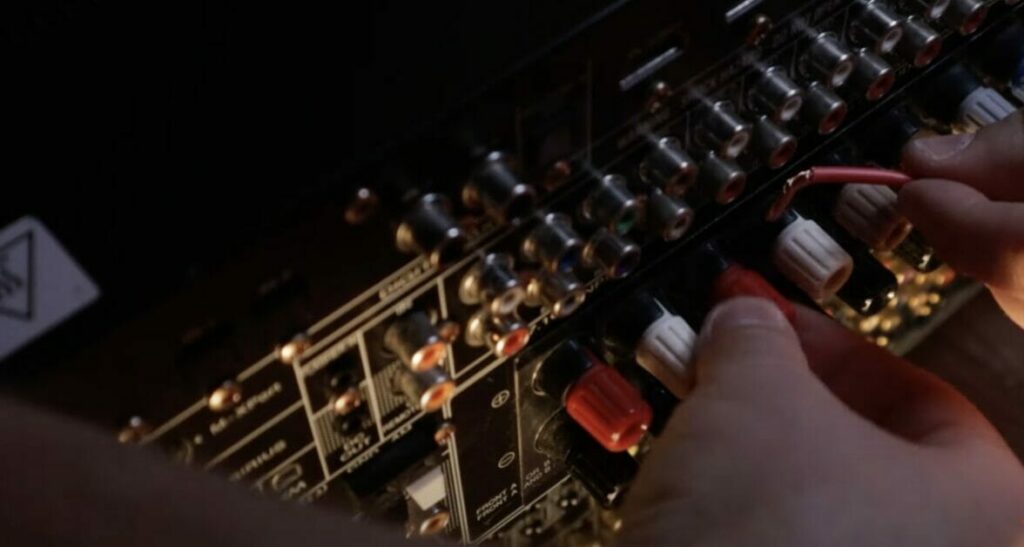
Wiring speakers may seem like a piece of cake, but let me tell you, folks tend to mess it up more often than not. So here are some common pitfalls that I’ve seen over the years.
Polarity Confusion
First, we’ve got polarity confusion. That’s right – the black stripe on your speaker wire! Many people assume it’s positive because black usually indicates negative in electronics. But guess what? It can be either positive or negative, depending on the manufacturer! So before you start wiring, make sure you check your manual or consult with an expert.
Mismatch Wires
Next up is using mismatched wires for different speakers. Now, this might sound harmless, but it’s not. Using different types of wires can result in an unbalanced sound system, which we do not want!
Wire Length
Also worth mentioning is ignoring wire length. You’d think longer would always be better, right? Wrong! Longer cables increase resistance and can diminish your overall audio quality.
- Insufficient Stripping: I’ve seen folks who barely strip their wires and then wonder why their audio sounds funny.
- Poor Connections: If those bare ends aren’t secured properly within the terminals…let’s say you’ll be in for a shock!
Overloading Circuits
Last but certainly not least – overloading circuits by attaching too many speakers without considering the capacity of your amplifier.
Tips for Identifying Speaker Wire Polarity at Home
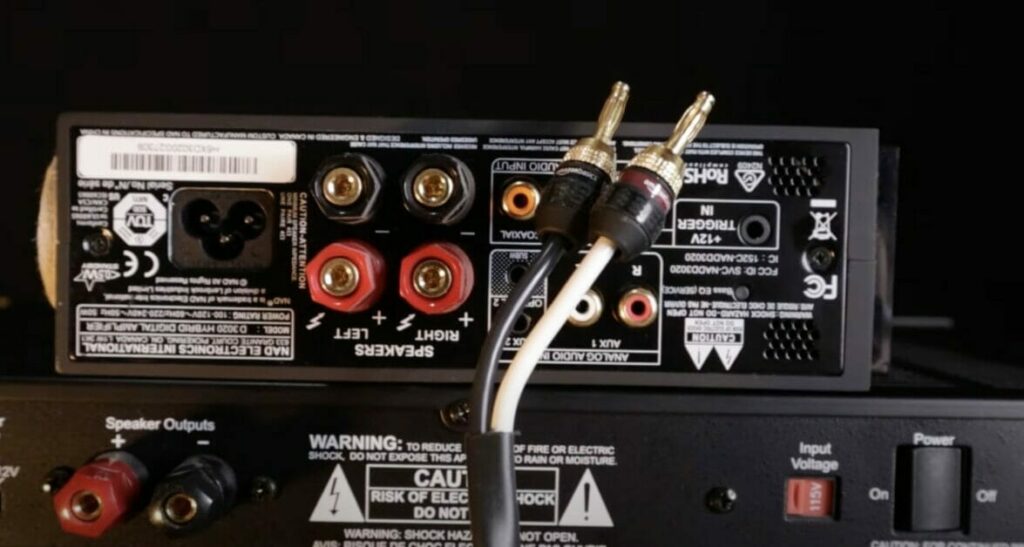
Polarity is super important when dealing with speakers – get it wrong, and your speakers might produce distorted sounds or, worse, won’t work!
So, how do we identify which is which? Usually, if you’re looking at speaker wire and one side has a black stripe, or maybe it’s entirely colored black, that’s your negative wire. The other wire without any distinguishing marks? That’s usually your positive wire.
But what if both wires are colored differently and have no stripe? In this case, look for other distinguishing features like text or ridges that could indicate which is positive and negative.
Remember though:
- Use caution if there’s no clear difference between the two wires.
- It’s always best to refer to any instructions manufacturers provide if available.
We can also test polarity using some simple tools from around the house:
- Grab yourself a 1.5-volt AA battery.
- Connect one end of each speaker wire to each terminal on the battery.
- Now observe – if the speaker cone moves outward, your positive and negative are correct!
- If it moves inwards, then switch them around because they’re backward.
And voila! You’ve figured out the polarity of those tricky little wires! With these tips up your sleeve, setting up sound systems should be less intimidating now!
Safety Precautions to Take While Handling Speaker Wires
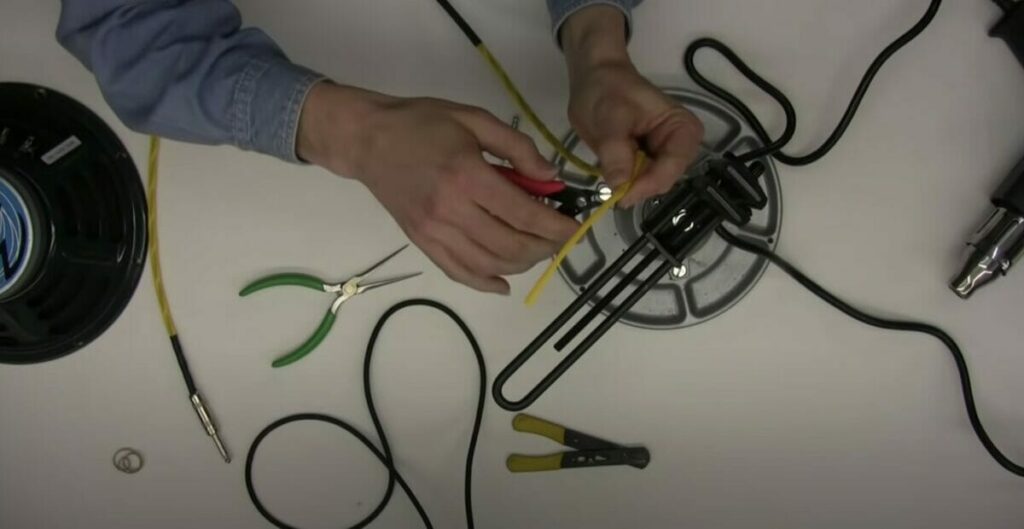
I don’t want to scare you, but messing with wires can be dangerous if you don’t know what you’re doing. So, let’s get this sorted out right away.
First off, always turn off the power before touching any wire. Sounds simple enough, right? But it’s amazing how many folks forget this easy step and get the shock of their lives! So remember: no playing around with live wires!
The next thing on our list is to ensure we have proper equipment for handling those pesky cables. A pair of insulated gloves are your best friend here. They’ll keep your hands safe from harm from accidentally touching exposed wiring.
Oh, and another thing – never use metal tools when working on a setup that isn’t entirely disconnected from its power source. That’s just asking for trouble!
Now, onto the main event – the speaker wires themselves! You see these two little lines running down each wire? One’s usually got a color or some marking – that one’s positive, and the other one without the marking is negative.
Don’t take my word for it; always double-check using a multimeter if possible. It’ll help prevent any nasty surprises later on!
Also, do yourself a favor and avoid too much pulling or yanking on those wires – they’re more fragile than they look!
Here are some key points:
- Turn off the power before starting
- Wear insulated gloves
- Avoid using metal tools if not fully disconnected
- Double-check positive/negative using a multimeter
- Handle those babies gently
References
Organizations:
- Audio Engineering Society (AES). https://aes2.org/
- Consumer Electronics Association (CEA). https://www.cta.tech/
Books:
- “The Loudspeaker Design Cookbook” by Vance Dickason. https://www.amazon.com/Loudspeaker-Design-Cookbook-Vance-Dickason/dp/1882580338
- “Sound Reproduction: The Acoustics and Psychoacoustics of Loudspeakers and Rooms” by Floyd Toole. https://www.amazon.com/Sound-Reproduction-Psychoacoustics-Loudspeakers-Engineering/dp/0240520092
Websites:
- Crutchfield. https://www.crutchfield.com/
- Parts Express Tech Talk Forum. https://techtalk.parts-express.com/forum/tech-talk-forum
- AVS Forum. https://www.avsforum.com/
- Audiogon Discussion Forum. https://forum.audiogon.com/
Video References:
GoldenEar AudioReview
Jack of All Tech
Audio University
TubeDepot
